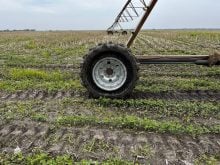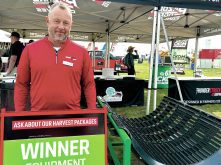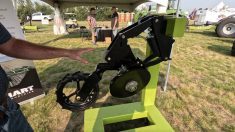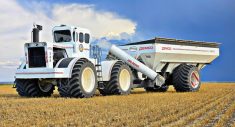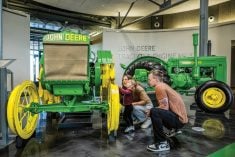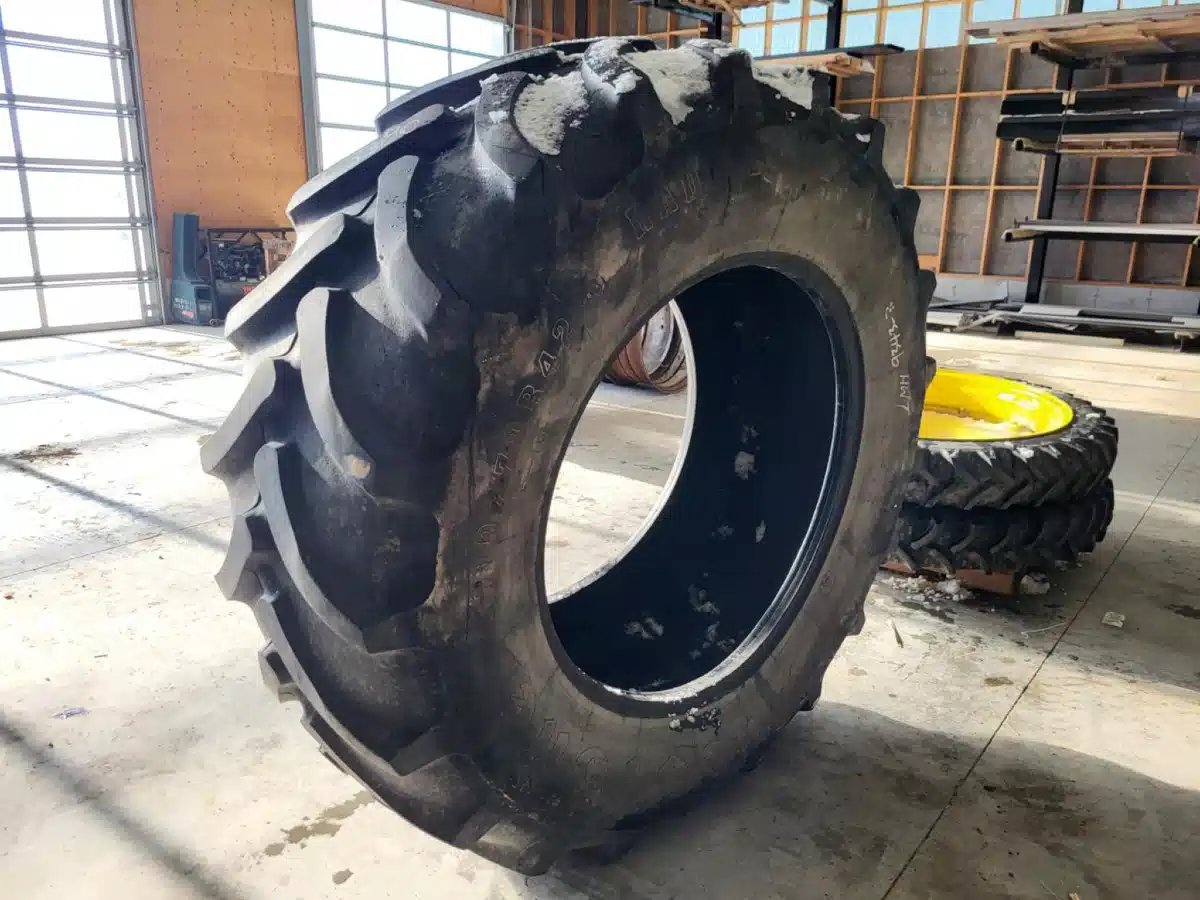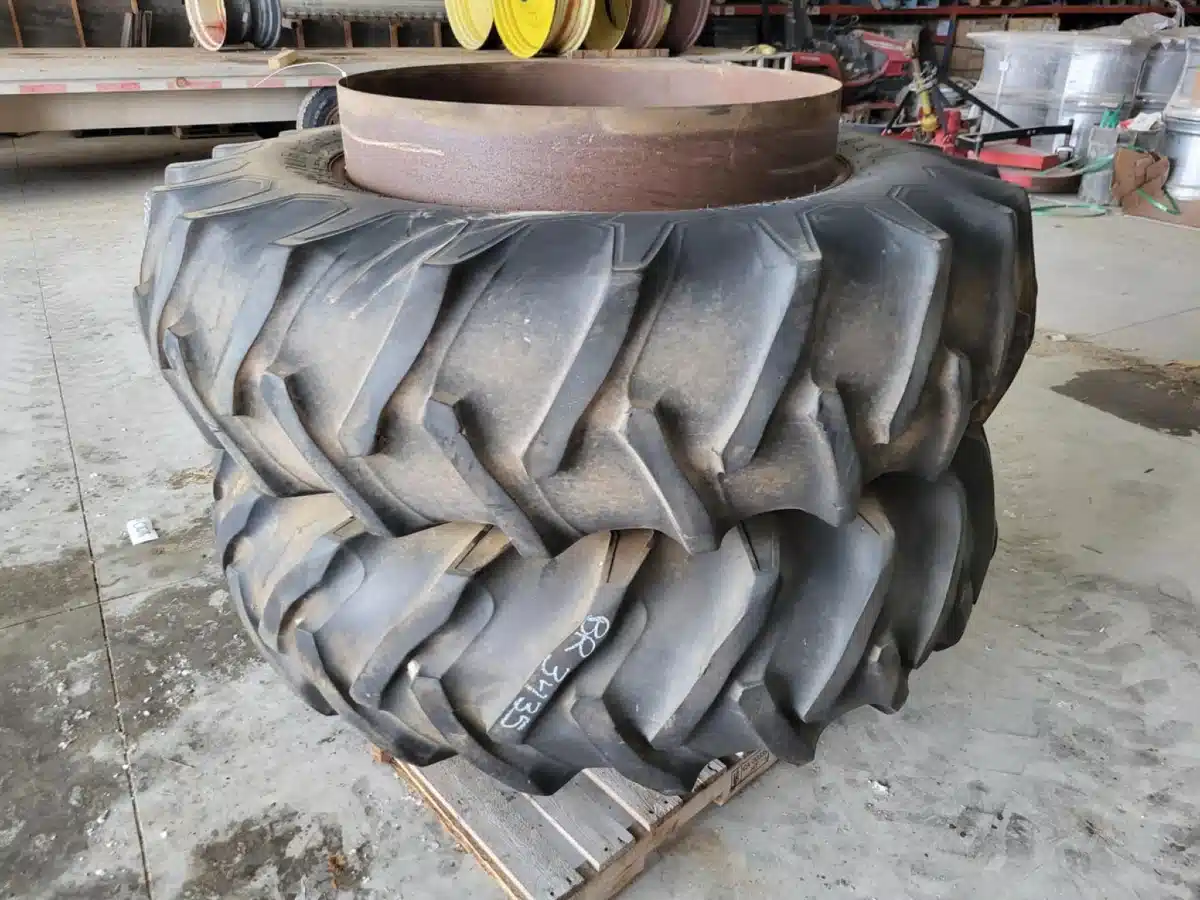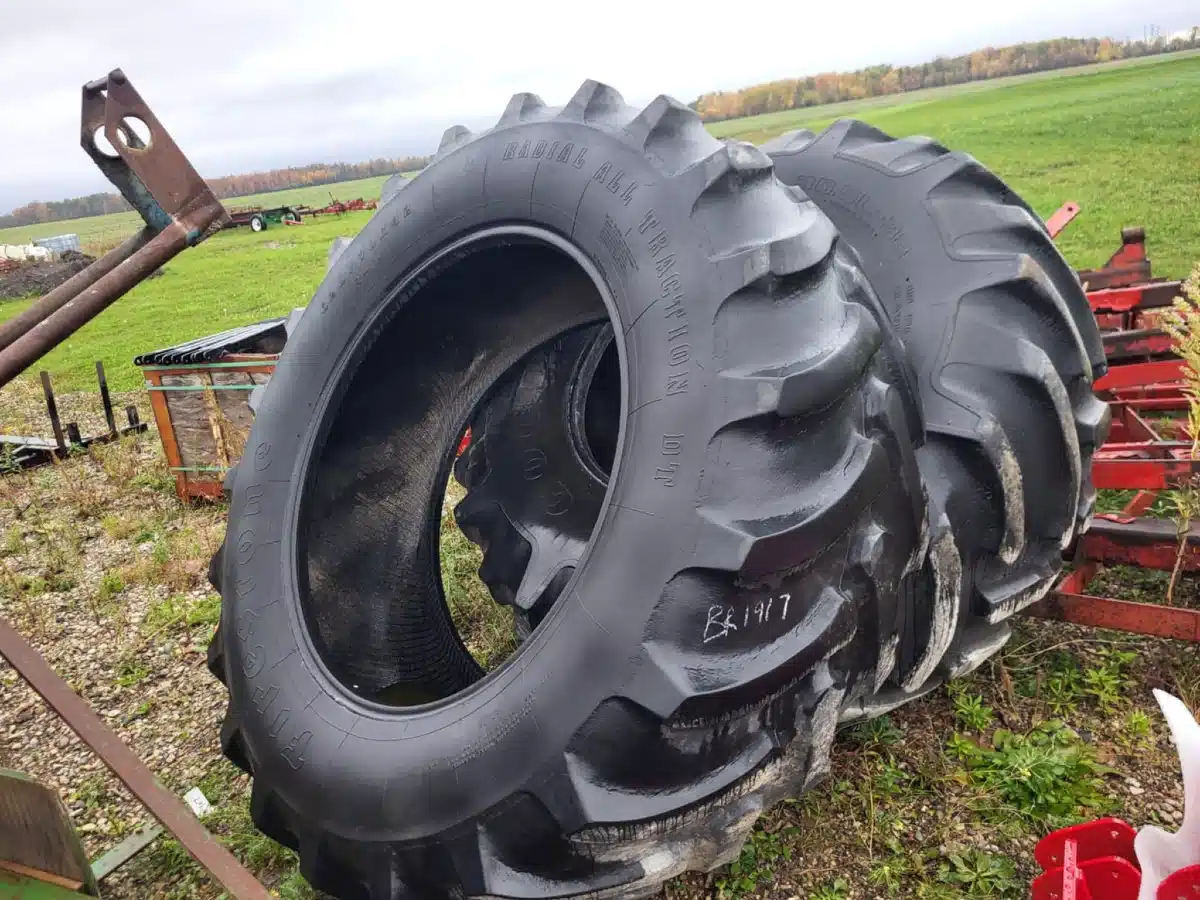Don’t let its adorable little yellow flowers from the summer fool you — canola today can be “like little rebar” in your tractor tires.
That was a late takeaway from an ag tire clinic for farmers at Melfort, Sask. in July, hosted by staff from retailer Kal Tire and manufacturer Firestone Ag. It’s not that ag tires are in any way weaker today, but rather that crop stalks and stubble — be they canola, corn or others — are definitely stronger.
Consider the yields you were getting years ago, says Dusty Hininger, a Texas-based sales training manager with the Firestone Ag division of Bridgestone Americas.
Read Also
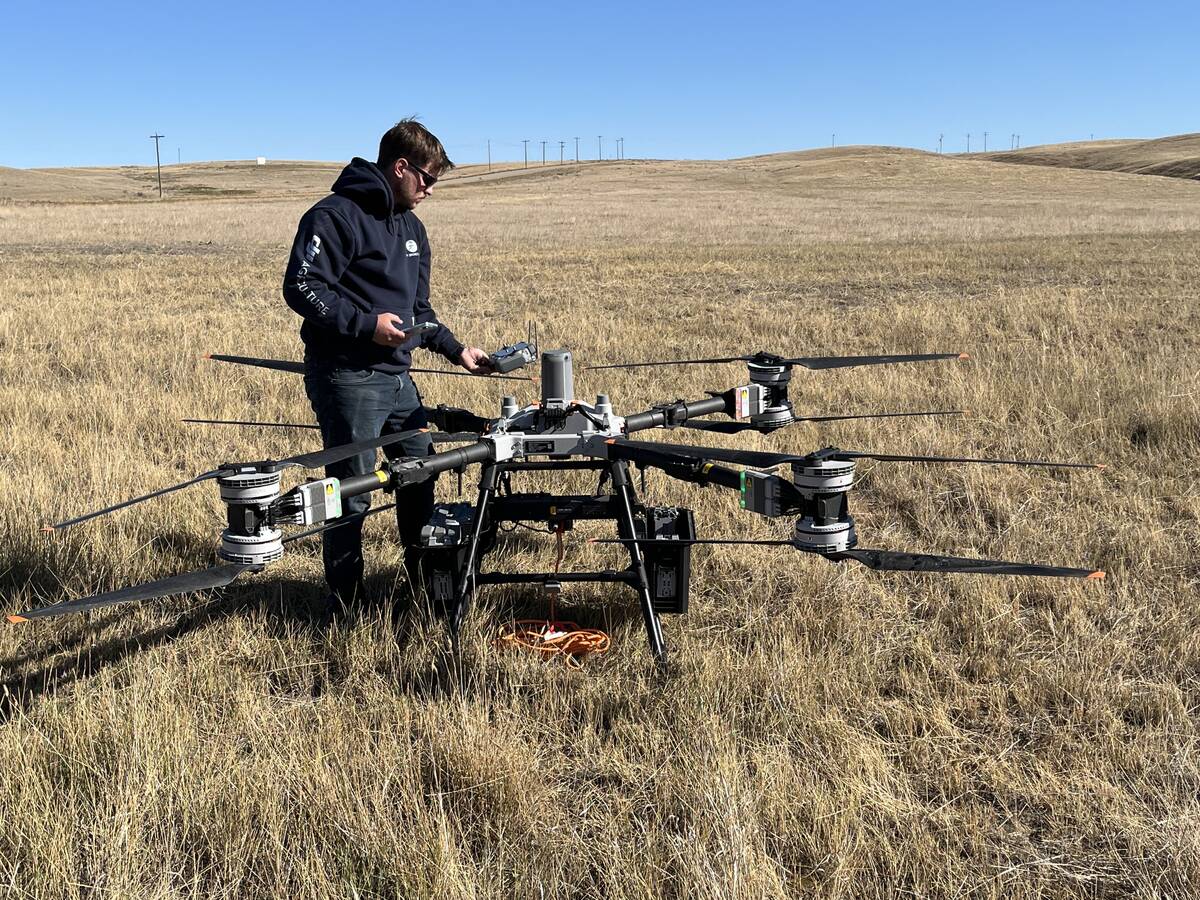
Farm-facing drone does the heavy lifting
Canadian distributor DJI Agriculture unveils its AGRAS T100 drone to western Canada’s producers for greater efficiencies in spraying and granular spreading in fields.
“What is it now — is it the same stalk? No. They’ve genetically modified that stalk to hold (the plant) up, make it stronger and stronger. Because why? They’re getting more bushels,” he told the Melfort audience.
“Are we done (increasing yield)? What are your bushels now, is it 60-80? You think they’re done? Twenty years, you’re going to have 120. Is that the same stalk? No. Because stalks are getting harder and harder.”
And improved genetics are only part of the issue, the companies warn. Not only do stronger stalks decay more slowly, but your improved farming practices “are resulting in higher population rates with stouter, healthier stalks.”
“This is going to get worse, I guarantee you,” Hininger says. “All tires do not like stubble.”
Of course, the peak period for risk to your tires is right after the crop comes off the field — but stubble can still cause problems for your tires the following spring, especially when weather conditions favour those standing stalks.
For example: in a relatively dry off-season, not only will crop residues go through less decay, but the soil will also hold those residues more firmly in place when your tires pass over them in the spring.
A relatively dry growing season, on the other hand, would produce smaller-diameter stalks that are less likely to retain that stiffness for long.
How you cut those crops will also be a factor, the companies add.
For example, if your pass in the spring is at an angle to your pass from the previous fall, your tires will be more exposed to upright stubble.
Stalks that were cut at a higher angle will more easily puncture a tire. Also, lower cutting height raises the chance of a tire running over, rather than knocking down, an upright stalk. Taller tires are also less able to knock over those stalks, the companies say.
Some tire arrangements are also more at risk of damage than others, Firestone says. The more susceptible fitments include the steer tires on combines with front duals; front single tires on combines; mechanical front-wheel drive (MFWD) and four-wheel drive front tires; and MFWD rear tires that are wider than the front tires.
What’s more, if you’re going to get a puncture from stubble in your tractor or combine tire, those most typically happen during the tire’s first season in service — particularly if it’s from a more recent production run, Firestone says.
That’s not to say the newer tires are in any way inferior. Rather, it’s just that tires are at their most susceptible when the rubber hasn’t yet had a chance to harden naturally over time.
For its part, that’s why Firestone’s got a stubble damage policy covering certain of its ag tires against excessive wear through abrasion, within their first three years of service. The coverage is gradually reduced year over year.

Punches and scrapes
To be sure, a puncture is going to be the more pressing problem, because it risks piercing a tire’s inner liner, causing leaks.
Even if a strong standing stalk doesn’t cause a puncture, exposure to tough crop stubble over time can gradually wear at a tire tread and/or sidewall. The abrasion you might see in those cases shouldn’t punch through to the tire’s inner liner; nor would it cause air loss “except in very advanced cases,” Firestone Ag says.
The damage caused by that kind of gradual abrasion can be a bad look, though, when it comes time to sell or trade in your tractor, Firestone adds.
But if the cosmetics of an affected tire don’t bother you, the tire will still be serviceable — except, of course, if the abrasion is serious enough to expose cords.

Mechanical solutions
The most effective way to prevent abrasion or punctures from stubble is to knock down the stalks before your tires reach them. To do that, you’d need to make or buy a combine header attachment such as a stalk roller.
Apart from preventing damage to the tires coming right up behind the header, these attachments should also crimp the stalks. Not only will that speed up the decay of the stalks, but it will also reduce soil erosion by helping to keep the crop residue from blowing off the field.
Several companies make and sell such header attachments. In Hininger’s presentation, examples included PolyTech’s Stubble Stoppers, Yetter’s 5000 Stalk Devastator and May Wes’s G4 Stalk Stomper, among others.
“All you have to do is get that stalk (bent) about 75 per cent over,” Hininger says.
If you go for that kind of an attachment, though, he cautions you to make very sure it will apply enough down-force to bend the stubble. He tells the story of one field in Texas where the stalks, once pushed over, popped back up and still had enough strength to punch into a tire.
Past that, Firestone also recommends that you cut crops as high as possible, so your tires stand a better chance of knocking down stalks rather than hitting the points head-on.
In row crops, the company says, you may also want to try to drive between the rows to reduce your tires’ direct exposure to stalks and stubble.
Firestone also recommends keeping your tires appropriately inflated “at all times.” The tread and sidewalls of an under-inflated tire will be more exposed to stubble. An over-inflated tire, meanwhile, is more likely to get a puncture.




